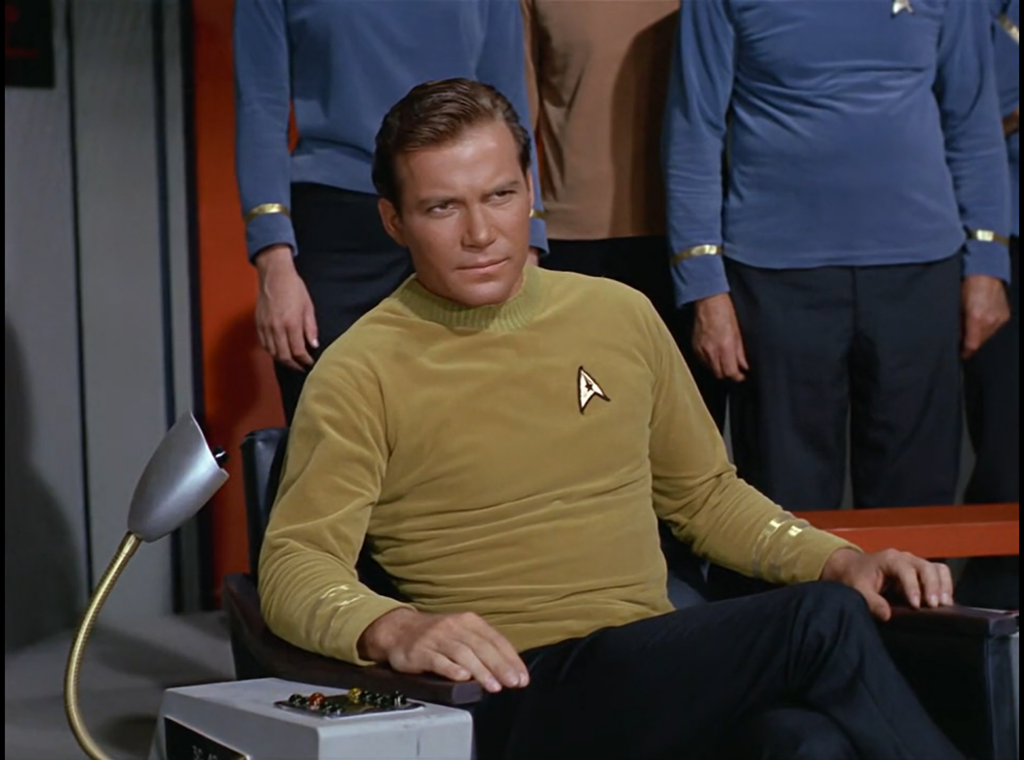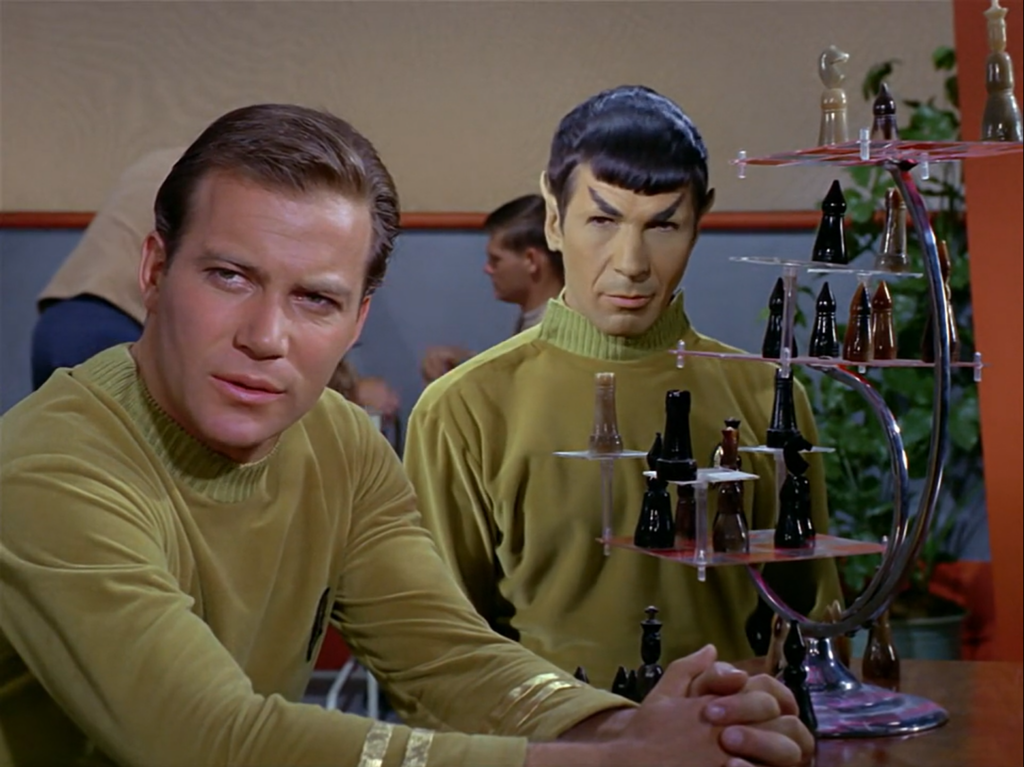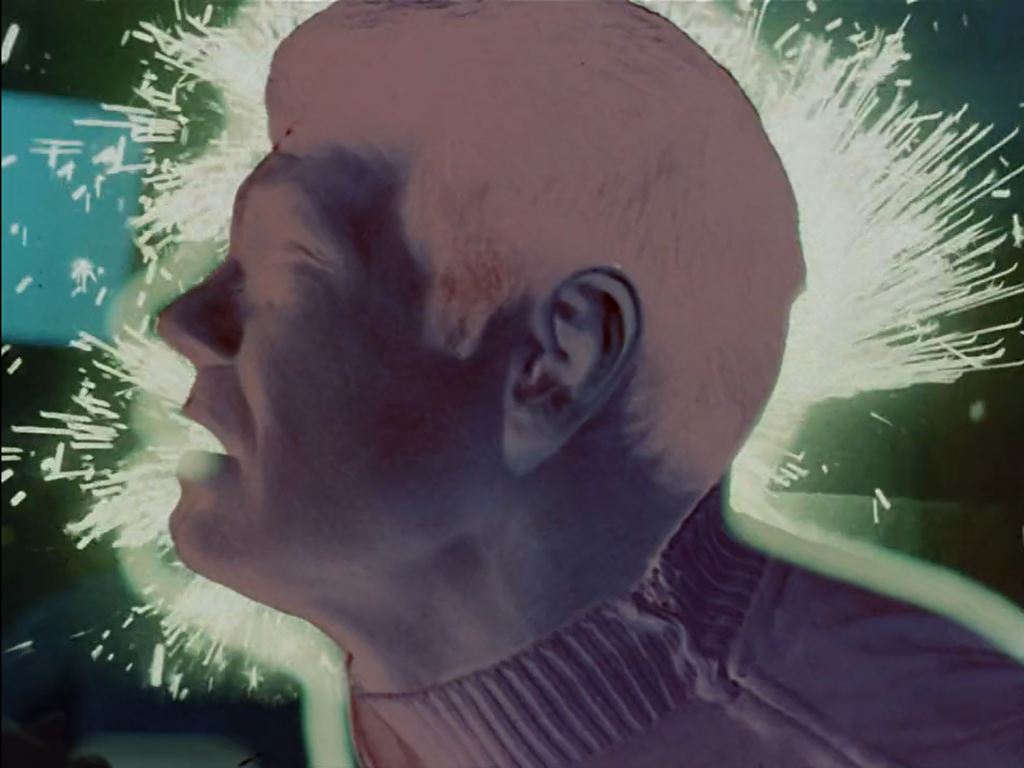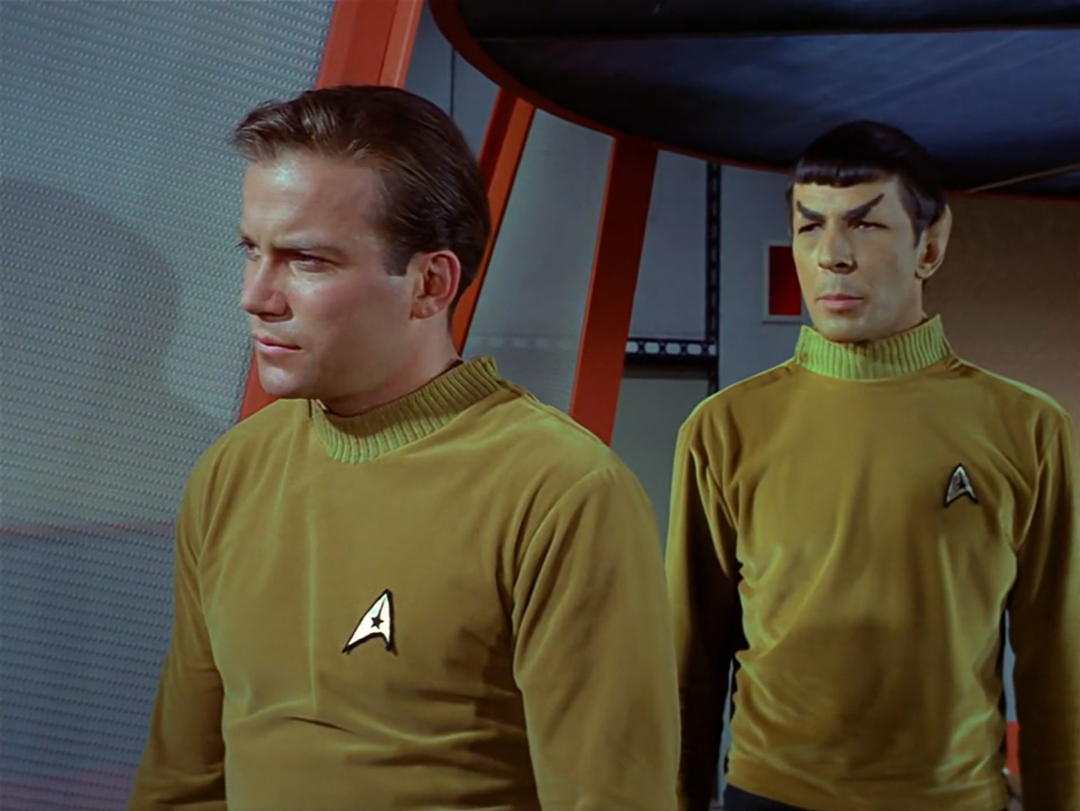Welcome to our new series – Trek On. We boldly go where no man has gone before. I’m starting with the original series and going through the golden age of Star Trek, all the way up to Enterprise. As far as I’m concerned, it ended there. This is a nearly 40-year span, with admittedly a lot of gaps here and there, but a pretty damn good stretch.
In most cases, I will do the series and movies chronologically in-universe. That means I’ll do the original series, followed by those movies, and then The Next Generation. Where there’s no specific reason to be out of order, I’ll go by airdate, though in a few cases, episodes air out of order. Those I’ll move to chronological order. But this mostly is the original series for now. Look for new articles every Monday, Wednesday, and Fridays.
I also won’t do unaired pilots as we are going to examine what’s canon and what’s not. So I won’t do The Cage. However, that episode is nicely covered in The Menagerie so it would be redundant anyway. I won’t go too deeply into plot descriptions as most people are pretty familiar with them and if you aren’t, I’m surprised you’re reading this.
With all that out of the way, let’s start with the very first episode shot, though not aired.

Airdate: 9/22/1966
Where No Man Has Gone Before – Plot Summary
The Enterprise gets a message from a long-thought-lost ship and is investigating. Kirk and Spock are playing a game of 3d chess. They get a lot of weird messages from the Valiant, at least from their library tapes. They tried to leave the galaxy and get smacked back with a whole lot of damage.
Gary Mitchell is affected the most, having a high Esper rating, or Extra Sensory Perception. He begins to gain a lot of powers which worries Spock.
Elizabeth Dehner is the ship’s psychiatrist. She also was somewhat as affected as Gary was, but it’s not until halfway through the episode that she starts developing the same powers that Mitchell does.
Mitchell can’t handle the power and loses his humanity. He must be marooned on a planet but doesn’t take it well. Kirk and Mitchell have a fistfight, as you do when trying to deal with a God. Of course, Kirk winds up winning.
Risk Is Our Business
Kirk establishes himself here as the swashbuckling but somewhat conflicted Captain. He shows loyalty to his friends and his crew and is pretty torn between having to kill his friend. No huge speeches but a good introduction to an icon.
He also employs his trademark argument skills, talking Elizabeth into turning against Gary, pointing out how absolute power corrupts absolutely. Not his most memorable, but a solid intro.
He also has the final punctuation on the episode with “I believe there’s some hope for you after all, Mr. Spock.”

Logical
Spock likes to yell a lot on the bridge. He also has much bushier eyebrows than he would later have on the show. Emotions are a no-no. Nimoy would soften his portrayal a bit as the show progressed but he pretty much nails it from day one.
He’s Dead Jim
McCoy has not yet joined the cast at this point.
Canon Maker
Well just about everything in Where No Man Has Gone Before sets the template, though some of it crudely. You see the transporter, the Enterprise with her saucer, secondary hull, and twin nacelles. The opening “To Boldly Go” narration, opening an episode with an entry in the Captain’s log, Spock not having human emotions, and uniforms having different colors, though red is not used. Spock notes Kirk was most illogical, a term with various variations that will become permanently tied with the character.
Scotty is introduced as the chief of engineering. Sulu is also introduced, but in a blue uniform as a physicist.
Gary Mitchell mentions a little blond lab tech he sent Kirk’s way that he almost married. Many speculate this was Carol Marcus.
The Medical beds are also established here, as well as the flip communicator, though in a bulky clear plastic that will be replaced with the sleeker black model.
Canon Breaker
Spock smiles during the chess match, something he would never do except under extreme circumstances. He also mentions a distant ancestor of his was human, rather than his mother being human.
Rank insignia are wrong, with Kirk only having two bars on his wrist rather than 2 solid with a third dash in between. The uniforms also are loose turtlenecks that would change to the black undershirt with the colored overshirt for the rest of the series.
Sulu mentions money, something the Federation had done away with. Sort of.
The gravestone Gary creates shows James R Kirk, a middle initial that would become “T” later on. Oddly it wasn’t established as Tiberius until the final movie, though it was known informally as that for a while from novels.
ESP ratings as a concept are dropped and never mentioned again throughout all of Trek.
Man It Feels Bad To Be A Red Shirt
There are no “red shirts” in this episode technically speaking however one crewman gets strangled by a cable telekinetically moved by Gary. Given he’s in engineering, we could surmise he would’ve been wearing red were it not the pilot episode.
Technobabble
Spock uses a handheld speaker that will get replaced with the more Bluetooth-looking silver one later. Lithium is mentioned as a power source, something that will become dilithium later on. Phaser pistols are introduced but are nothing like the guns we will come to know.

I Know That Guy
Gary Lockwood plays Mitchell, who would go on to play Frank Poole in 2001: A Space Odyssey. Sally Kellerman would go on to play Hot Lips Houlihan in M*A*S*H, the movie not the show.
What It Means To Be Human
This episode was shot as the second pilot after the first pilot, The Cage, was rejected by NBC. The only remnant from the original pilot was Spock, though Majel Barret would eventually be recast as Nurse Chapel.
This episode really establishes what Star Trek was to be and although there are a lot of superficial changes, I like to think of it as more refinement of the product, this one being more a 2nd draft, if the first draft was The Cage.
Where No Man Has Gone Before was aired as the 3rd episode after The Man Trap and Charlie X, people must’ve been a little confused seeing how different everything was in this episode, only to revert to what had been previously shown for the rest of the series. I recall as a kid watching it in reruns, there wasn’t really an “order” to the series, it just showed every night and there was always this one episode with the weird uniforms and glowing eyes.
Shatner has Kirk figured out from day one, as do the writers. He has compassion and a dedication to his crew that comes across immediately. The last moments simply listing Gary as lost and commenting that “He didn’t ask for what happened to him” spoke volumes to a different way of thinking.
Remember this is 1966. Before then, a story like this would not have a lot of sympathy for Gary. He’d be evil and everyone would simply forget he had been a human before. While this seems pretty rote now, in 1966 this was kinda revolutionary.
As far as a Star Trek episode, having watched so much over the last 50+ years, I find Where No Man Has Gone Before to be middling, more of a curiosity than a great episode. I find myself too distracted by how people and things aren’t what they are supposed to be. Wrong phasers, wrong paint job on the medical room, wrong uniforms, and wrong places for actors.
However, that’s understandable as a 2nd pilot. Once they got the green light, then the real money and work could go into refining the series into what we know as Star Trek.






